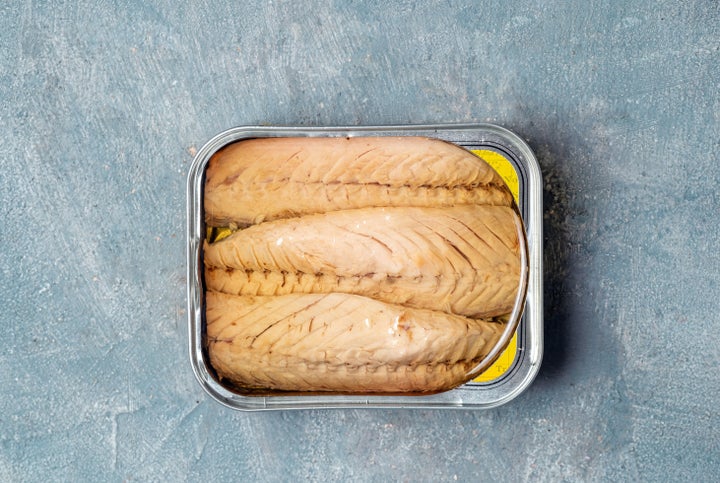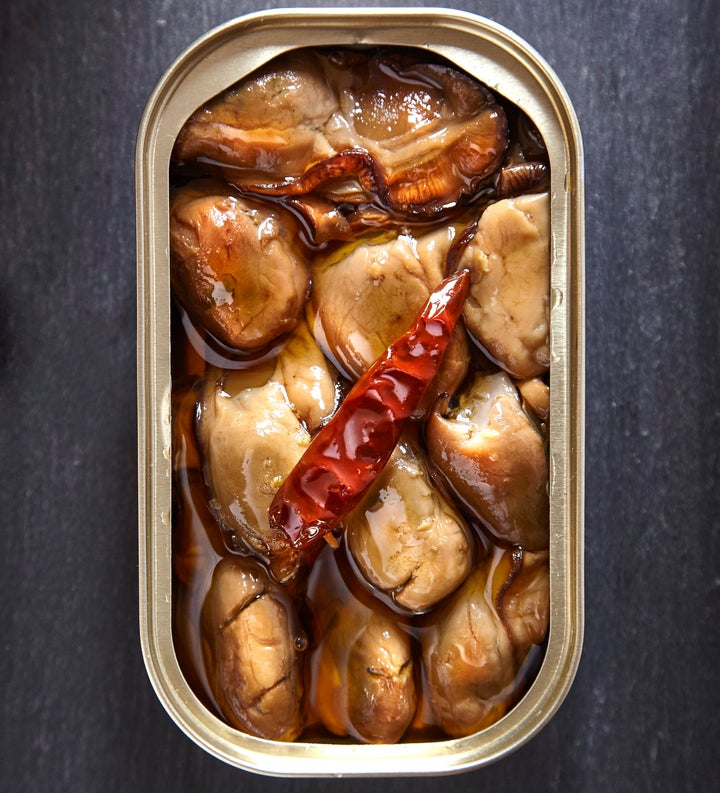Tuna, salmon, mackerel, sardines, oysters, clams and other seafood are transforming from pantry staples to sought-after specialties.
In addition to learning to bake the perfect loaf of sourdough bread, many of us got really good at cooking with pantry staples during the lockdown phase of the pandemic. And for the sake of our protein and omega-3 needs, that meant we ended up eating a lot of canned fish.
While going to the grocery store to pick up fresh fish doesn’t feel nearly as daunting these days, the popularity of tinned seafood has only grown. An April 2022 report from Grand View Research predicted that the global canned seafood market will see about a 6% growth rate annually over the next seven years and reach a value of nearly $50.5 billion by 2030.
The restaurant industry is catching on, too. The impossible-to-get-a-reservation restaurant Saltie Girl, with outposts in London, Boston and Los Angeles, boasts a menu with more than 100 tinned fish options, from mussels in pickled sauce to baby eels in olive oil.
Trendy it may be, but canned seafood has been around for centuries, and was considered a necessity at a time when home refrigerators didn’t exist and fresh food wasn’t always easy to come by. But in modern times, is tinned seafood part of a healthy diet? And if so, which ones should we eat and which types should we skip? Here’s everything you need to know.
Yes, Tinned Seafood Can Be Healthy
Generally speaking, tinned fish is indeed healthy, said Tamar Samuels, a registered dietitian. “Canned fish is a convenient and affordable source of protein, and depending on the type of fish can also be a great source of omega-3 fatty acids and other essential nutrients,” Samuels said, noting that health benefits vary depending on processing and preparation methods (more on that later).
Registered dietician Maggie Michalczyk agreed ― but added one thing worth considering is the fact that tinned seafood tends to be higher in sodium than fresh seafood. So if you’re watching your salt intake, you’ll want to opt for lower-salt canned seafood or fresh seafood.
It Can Be Pretty Sustainable, Too
Most of the world’s oceans are overfished, with a third of fisheries on the verge of biological collapse, as Mark Driscoll, sustainability expert and founder of the consultancy Tasting the Future, noted. For that reason, choosing sustainable fish is more important than ever, he said. Luckily, that’s pretty easy when it comes to tinned fish as long as you’re willing to read labels.
“Choose tinned fish that is certified sustainable and look out for logos such as the Marine Stewardship Council logo, which will ensure fisheries are managed to environmentally sustainable and legal harvest levels, minimize bycatch of non-target or endangered species and minimize impacts on wider marine eco-systems,” he said. “Secondly, look for fish that are listed under the Marine Stewardship Council’s Good Fish Guide. Most pelagic (shoaling) fish such as sardines, mackerel, pilchards and anchovies tend to be better from a sustainability perspective than larger fish that are higher up the food chain, like tuna and salmon.”

The Best Types Of Tinned Seafood For Your Health And The Planet
When it comes to actually picking out tinned fish, both Samuels and Michalczyk emphasize that nutrition-wise, there isn’t going to be a huge difference between the fancy tinned fish you find at trendy restaurants and what you’ll find at the grocery store. And luckily, the stuff at the grocery store is cheaper.
But as you sort through the many tins available at the grocery store these days (it’s not just tuna!), what should you look for? “I recommend choosing canned fish options that are packed in water or olive oil,” Samuels said. “Many canned foods are high in sodium, so make sure you look at labels and avoid any products with added salt and/or those that have more than 140 grams of sodium per serving.”
And in addition to being better for the planet, Samuels said most wild-caught brands are also more nutritious. “Some of my favorite brands are Safe Catch, Wild Planet and Bumble Bee low sodium options,” she said.
An easy way to make sure you’re choosing wild-caught (and therefore more nutritious and sustainable) fish is to look for tinned fish sourced from Alaska, Michalczyk said. “The majority of canned salmon available in the U.S. comes from the state of Alaska, which is great because Alaska salmon is guaranteed to be wild-caught and sustainable,” she said. “It’s also an excellent source of omega-3 fatty acids, calcium and vitamin D — this is especially important to note because a lot of us don’t get the recommended amount of vitamin D and there are not that many food sources of it.”

As for the actual types of fish that will give you the most nutritional bang for your buck, Samuels said it all depends on the nutrients you want to load up on. “Salmon, mackerel and sardines are a great source of omega-3 fatty acids, while oysters and clams are a great source of zinc. Octopus is a great source of B12 and selenium, and cod is a great source of vitamin A,” she said.
Aside from shopping wild-caught brands and investigating labels, Driscoll said that if sustainability is top of mind, you can opt for canned shellfish like mussels, oysters and clams. “These fish have lower average greenhouse gas emissions and use less water and land than other forms of seafood,” he said. “They also extract more nitrogen and phosphorus from the environment than they emit, protecting oceans against eutrophication (becoming too enriched with nitrogen and phosphorous).”
Creative And Delicious Ways To Enjoy Canned Fish
Long story short: Canned fish is great for you, and some brands aren’t bad for the planet, either. But other than dumping a can of tuna into a bowl and mixing it up with ridiculous amounts of mayo, how can you enjoy that can of fish you just picked up at the grocery store?
“One of my favorite ways to enjoy tinned fish is by adding anchovies to salad dressing, a la Caesar salad dressing,” Samuels said. “I also love adding sardines to whole wheat sourdough toast with goat cheese, arugula and sun-dried tomatoes. I use tinned salmon for salmon burgers for a quick weeknight dinner.”
As for Michalzyck, she adds canned fish to salads and pasta, makes fish cakes with them, or adds them to toast for a high-protein snack.
Another option? Open that can, grab a fork and dive in. Thanks to its trendiness and nutrient density, you can’t go wrong.
Credit: Source link